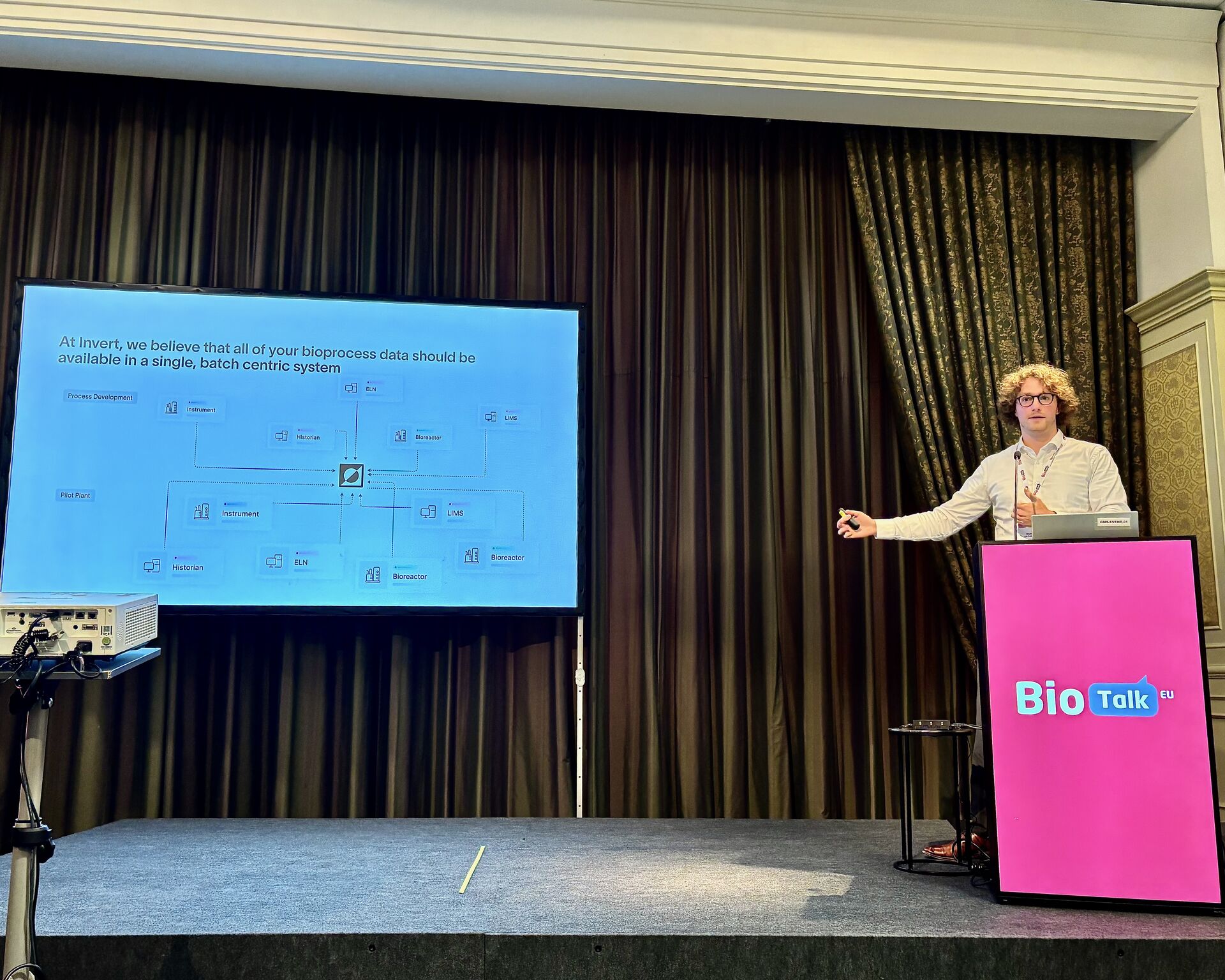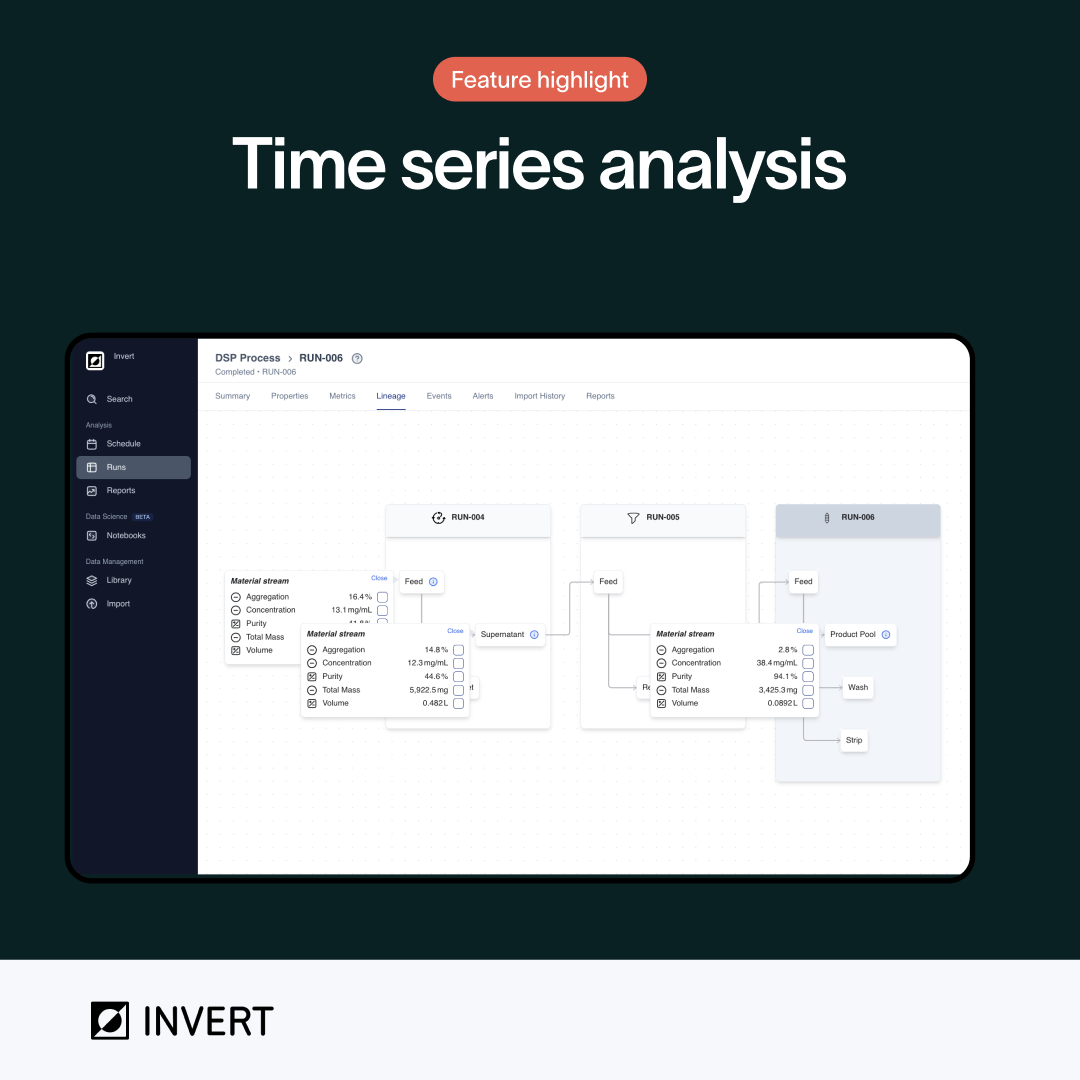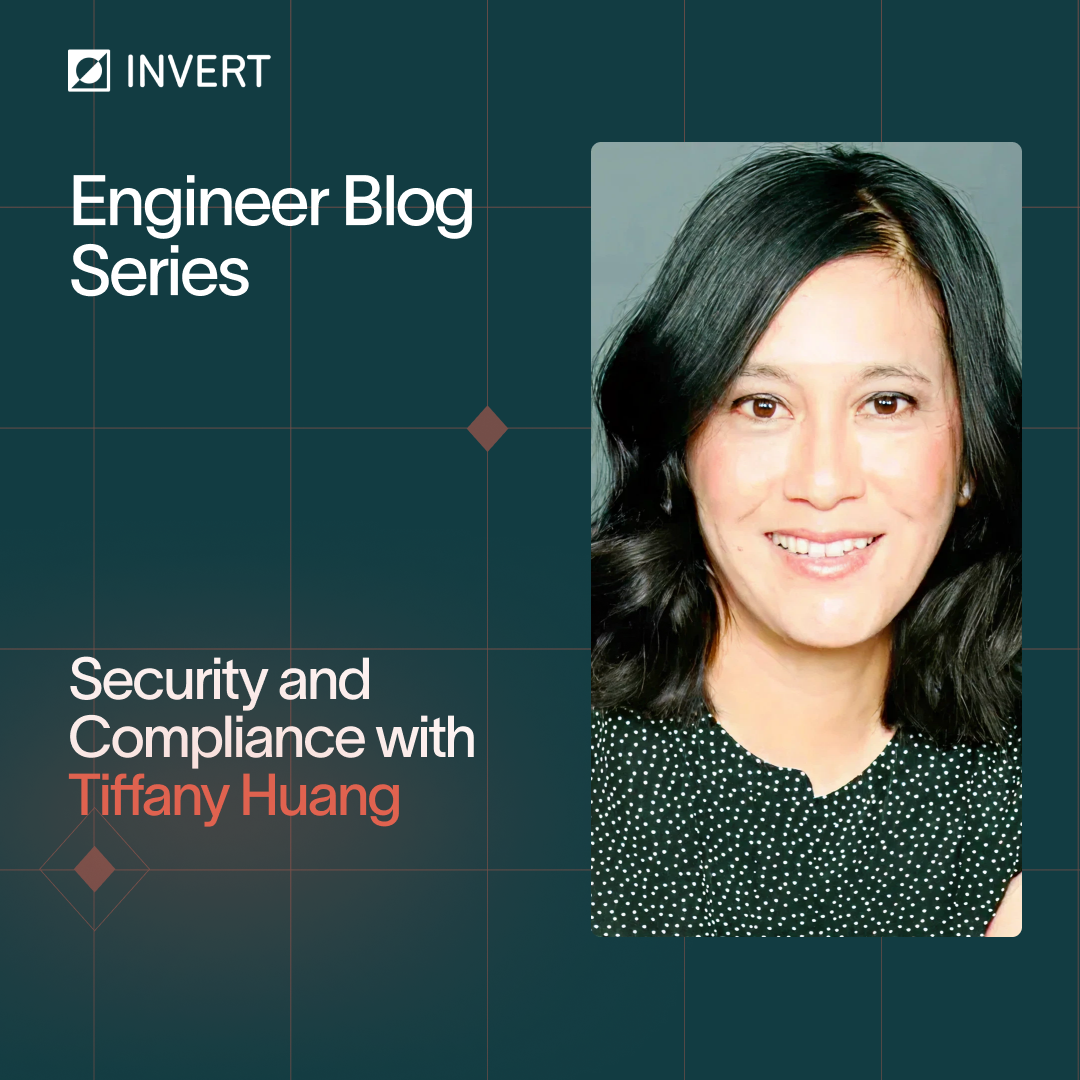AI That Bioprocess Teams Can Trust: Highlights from BioTalk Berlin

The problem no one has time for (but everyone feels)
Bioprocess data isn’t just fragmented — it’s fractured across ELNs, LIMS, historians, bioreactors, ÄKTAs, HPLCs, batch records, and CDMO file drops, each speaking a slightly different dialect of “pH” and “temperature.” The result: duplicate experiments, slow root-cause analysis, and painful tech transfer across scales and sites.
Those costs are real: scientists burn cycles collating data instead of doing science; data quality and scope issues creep in; scale-up decisions get made with partial context. Meanwhile, the high-value opportunities (predictive models, ML-driven DoE, digital twins) stay theoretical because the data foundation isn’t ready.
What “AI for bioprocess” actually requires
At Invert, we start with a simple conviction: all bioprocess data should be accessible in a single, batch-centric system. That means ingesting from upstream and downstream equipment and systems, then making that data unit-aware, metric-managed, and batch-aware, with calculated features that reflect how bioprocess scientists really analyze runs (e.g., totals vs. instantaneous rates).
This isn’t another generic BI layer. It’s a trusted, AI-ready data foundation with a native intelligence layer on top — live visualization, analytics built for USP/DSP, and a transparent AI interface — so teams can explore, compare, and decide without hand-stitching time series in Excel.
Strong POV: Data alone is not enough. Intelligence built on trusted data is what drives faster, better decisions.
Why “just slap an LLM on the database” fails
Yes, modern language models are powerful. But when you point a stock LLM at raw bioprocess data, it stumbles on the things that matter most: sequential, high-frequency time series and process optimization questions. In our internal evals, a naïve approach produces sporadic “okay” answers on general reasoning — and near-zero capability on online data analysis. In other words: not production-ready.
Even as LLMs improve generation to generation, that gap doesn’t magically close. You see uplift in general reasoning, but no reliable trend on time-series comprehension or optimization unless you add domain-specific scaffolding.
The Invert approach: prompts, context, tools — and proof
To make AI bioprocess-ready, we engineer around the model:
- Prompt engineering to calibrate scientific reasoning (speculate where appropriate, avoid flights of fancy).
- Context engineering to feed the right, batch-centric data at the right time.
- Tools/agents that perform the domain work (e.g., time-series stats, chromatography overlays, growth-rate calculations) instead of hoping the base model “figures it out.”
Then we do what scientists expect: measure it.
Evals: assays for AI
We use standardized prompts and auto-grading rubrics (0–1 scale) across four categories that map to real bioprocess work:
- General Reasoning – find and interact with data
- Investigation – pattern recognition & causality for root cause
- Online Data Analysis – calculations and conclusions from time-series data
- Process Optimization – prediction and next-best-action recommendations
With Invert’s domain prompts, context, and tools, performance increases immediately across all four — including the historically tough online data analysis — and in several tasks our answers saturate the scale (hit 1.0), forcing us to expand dynamic range with harder questions. That’s the standard you should demand before letting AI inform real decisions.
From question to answer — without the swivel-chair
During my live presentation, I showed prototypes of a chat interface that lets scientists ask natural-language questions (“What likely caused the titer drop in these runs?” “Recommend a scale-up DOE given these constraints.”) and receive answers backed by the right plots, stats, and context — not just text. The key: fast retrieval across all relevant runs and unit operations, with the guardrails to avoid apples-to-oranges comparisons.
Because the platform is batch-centric and unit-aware, the AI can compare like with like, compute totals vs. rates, and pull DSP outcomes against upstream conditions — the pairwise links that matter for root cause and tech transfer — without hours of manual data wrangling.
What this means for CMC leaders
- Accelerate answers. Reduce deviation RCA from days to hours by traversing USP↔DSP data with context intact.
- Cut wasted runs. Know what’s been tried, what worked, and what to change next; stop re-doing experiments due to missing context.
- De-risk scale-up and tech transfer. Compare conditions and outputs across sites and scales with normalized, harmonized metrics.
- Make AI auditable. Treat AI like a complex system you already know how to control: instrument it with evals, monitor drift, and hold it to measurable standards.
Strong POV: Delayed insights are wasted insights. Live visibility and AI on a trusted foundation are now a competitive necessity.
The takeaway
- Fragmented, unclean, and siloed data is holding back your AI-readiness.
- A batch-centric, harmonized, unit-aware foundation is the prerequisite.
- LLMs need domain scaffolding (prompts, context, tools) to deliver.
- Evals are non-negotiable — the assay that makes AI trustworthy in bioprocess.
About Invert
Invert is Bioprocess AI Software built by dual experts in bioprocess and technology. We unify, harmonize, and contextualize time-series data across instruments, sites, and CDMOs, then layer in real-time visualization, analytics, and a transparent AI interface — so teams cut wasted runs, lower cost and risk, and move therapies and sustainable products to market faster. Because waiting is no longer an option.
Interested in a deeper dive or a live demo?
Contact Michael McCutchen (Sr. Product Manager) at michael@invertbio.com or Hélène Panier (Director of Strategic Partnerships, Europe) at helene@invertbio.com.
Speaker: Michael McCutchen, Senior Product Manager, Invert. Delivered at BioTalk Berlin (September 18, 2025).
.png)
Engineer Blog Series: From Bioprocess to Software with Anthony Quach
Welcome to Invert’s Engineer Blog Series — a behind-the-scenes look at the product and how it’s built.In this post, software engineer Anthony Quach shares how his career in bioprocess development led him into software, and how that experience shapes the engineering decisions behind Invert.
Read More ↗
Connecting Shake Flask to Final Product with Lineage Views in Invert
Invert’s lineage view connects products across every unit operation and material transfer throughout the entire process. It acts as a family tree for your product, tracing its origins back through purification, fermentation, and inoculation. Instead of manually tracking down the source of each data point, lineages automatically show material streams as they pass through each step.
Read More ↗
Engineer Blog Series: Security & Compliance with Tiffany Huang
Welcome to Invert's Engineering Blog Series, a behind-the-scenes look into the product and how it's built. For our third post, senior software engineer Tiffany Huang speaks about how trust and security is a foundational principle at Invert, and how we ensure that data is kept secure, private, and compliant with industry regulations.
Read More ↗